Connect to Windows Nodes with PyWinRM
Connect to Windows Nodes with PyWinRM
Rundeck allows users to execute jobs to remote Windows nodes to manage and automate tasks using Rundeck workflows. This article shows how to add a Windows node and execute Rundeck jobs and commands with windows-based systems.
To communicate with Windows nodes, Rundeck uses an out-of-the-box Node Execution/ File Copier plugin that uses the WinRM (Windows Remote Management) protocol.
Note: If this is the first time adding remote nodes, we suggest reviewing the Rundeck Tutorial before adding Windows nodes. This exercise assumes some experience with Windows and Rundeck basics covered in the Tutorial.
Basic pywinrm Plugin Requirements
The pywinrm plugin needs the following requirements on the Rundeck server to work properly. It is supported on Rundeck running on Linux, Mac OS X, or Windows operating systems.
Requirements:
Tips
Make sure that your python installation is same that the one that is exported in your "PATH" environment variable, so the PyWinRm plugin can access its packages.
- We recommend this commands to check the python installation:
# Windows OS
where python - "example/path/to/python"
# linux OS
which python - "example/path/to/python"
The path to the executable must be the same if we dispatch the command to the required node with the AD-HOC command functionality.
The pywinrm plugin uses the python WinRM Library to provide the WinRM implementation.
- Python 3.3-3.5 or PyPy2 installed on Rundeck server. (Python 3 strongly recommended)
- Pywinrm library (It can be installed with the following command:
pip install pywinrm) - OpenSSL version 1.1.1 or higher. (openssl version can be checked with the following command:
openssl version - "OpenSSL 1.1.1k")requests-kerberosandrequests-credsspare optional.
Note: Due to networking complexity issues this exercise will not work with the Welcome Projects. These steps assume you have Rundeck installed using these instructions. For more information see the Additional Information section.
Basic Windows Requirements
To follow this How to Guide, your Windows system needs the following requirements:
- A Windows node in the same network as the Rundeck instance
- Windows Server 2008 R2 or above
- PowerShell 2.0 or above
Windows Configuration
The first step is to configure the Windows machine. To do this, go to the Windows instance and follow the these steps:
- Open a PowerShell terminal as an admin user profile.
- Enable the WinRM protocol on Windows:
winrm qc - Define the authentication type:
winrm set winrm/config/service/Auth '@{Basic="true"}' - Define the client authentication type:
winrm set winrm/config/client/Auth '@{Basic="true"}' - Allow unencrypted SOAP messages:
winrm set winrm/config/service '@{AllowUnencrypted="true"}'
Warning
It's important to allow access to the 5985 port via Windows Firewall (any between the Rundeck server and the node), to receive the remote requests.
Note: These settings are for Exercise purposes only and do not represent the most secure method of implementing. Please follow your own security guidelines for production implementations.
Rundeck Configuration
Create a Windows-based project on the Rundeck instance.
- Create a new project: Name
windows, and LabelWindows Jobs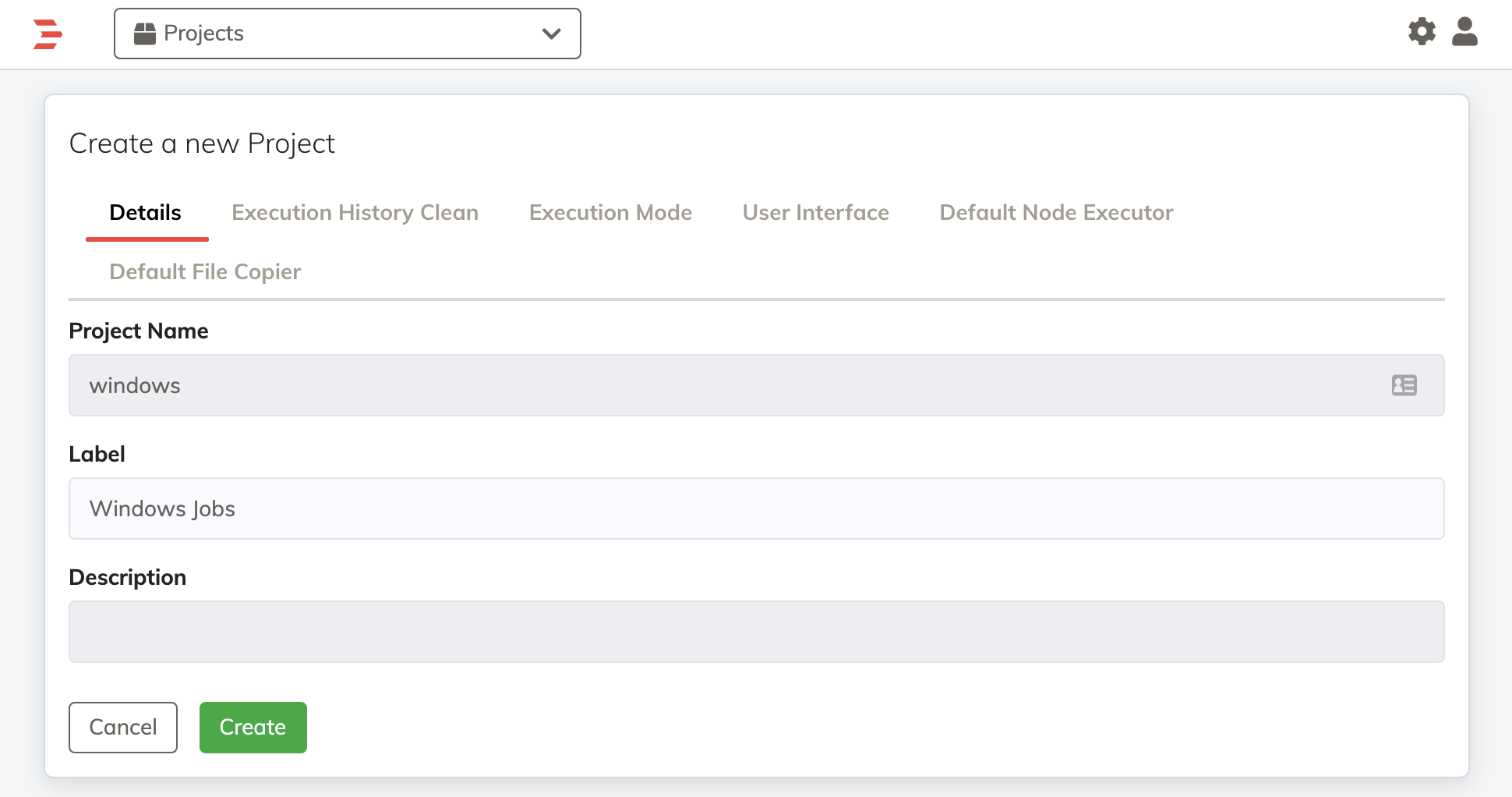
- Go to the Default Node Executor tab and then select WinRM Node Executor Python. It may be necessary to set the Python interpreter textbox to
python3interpreter as the command/path.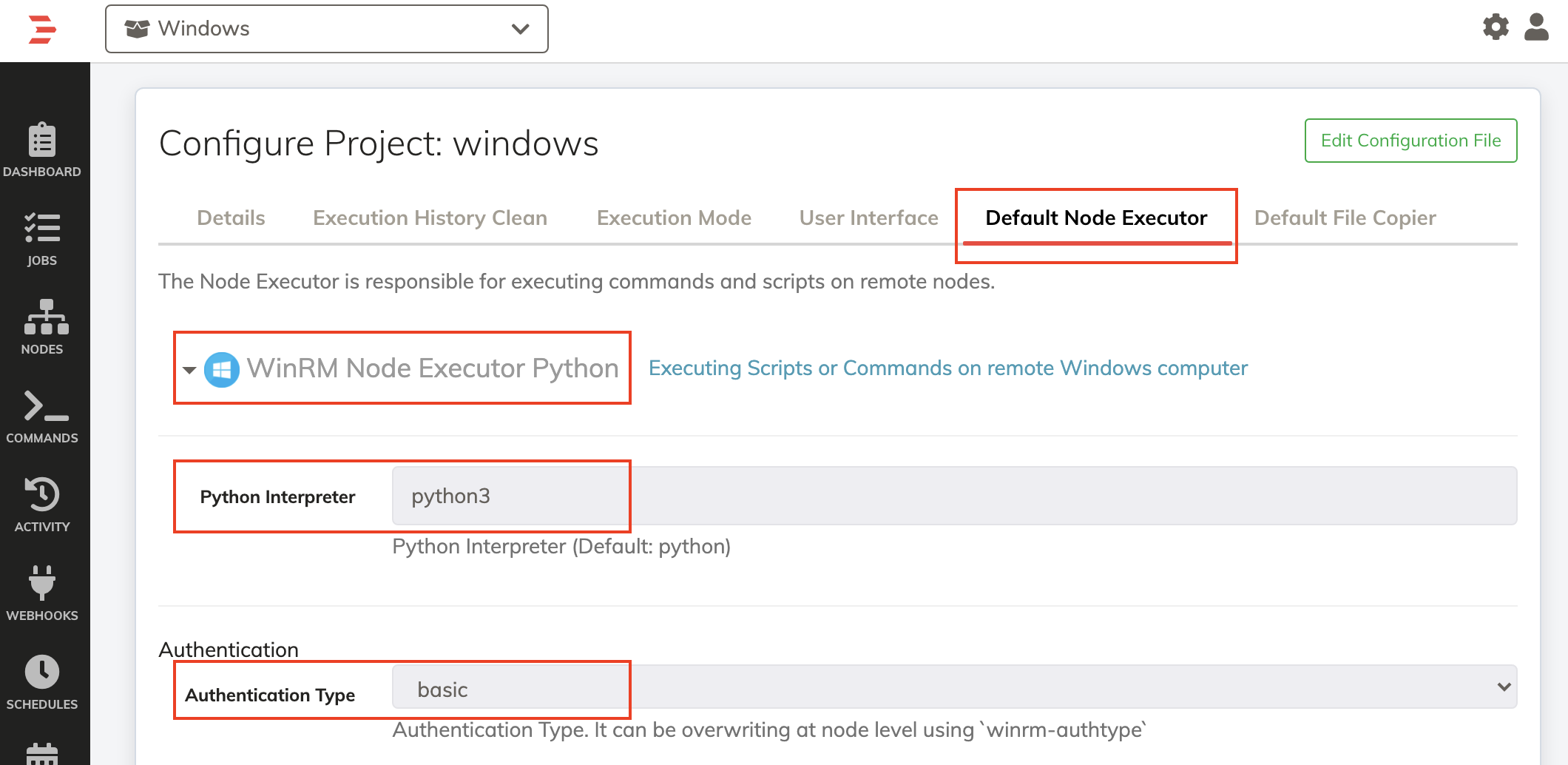
- Go to the Default File Copier tab and select the WinRM Python File Copier. Similar to the previous step, it may be necessary to define the Python interpreter textbox as
python3interpreter for the command/path.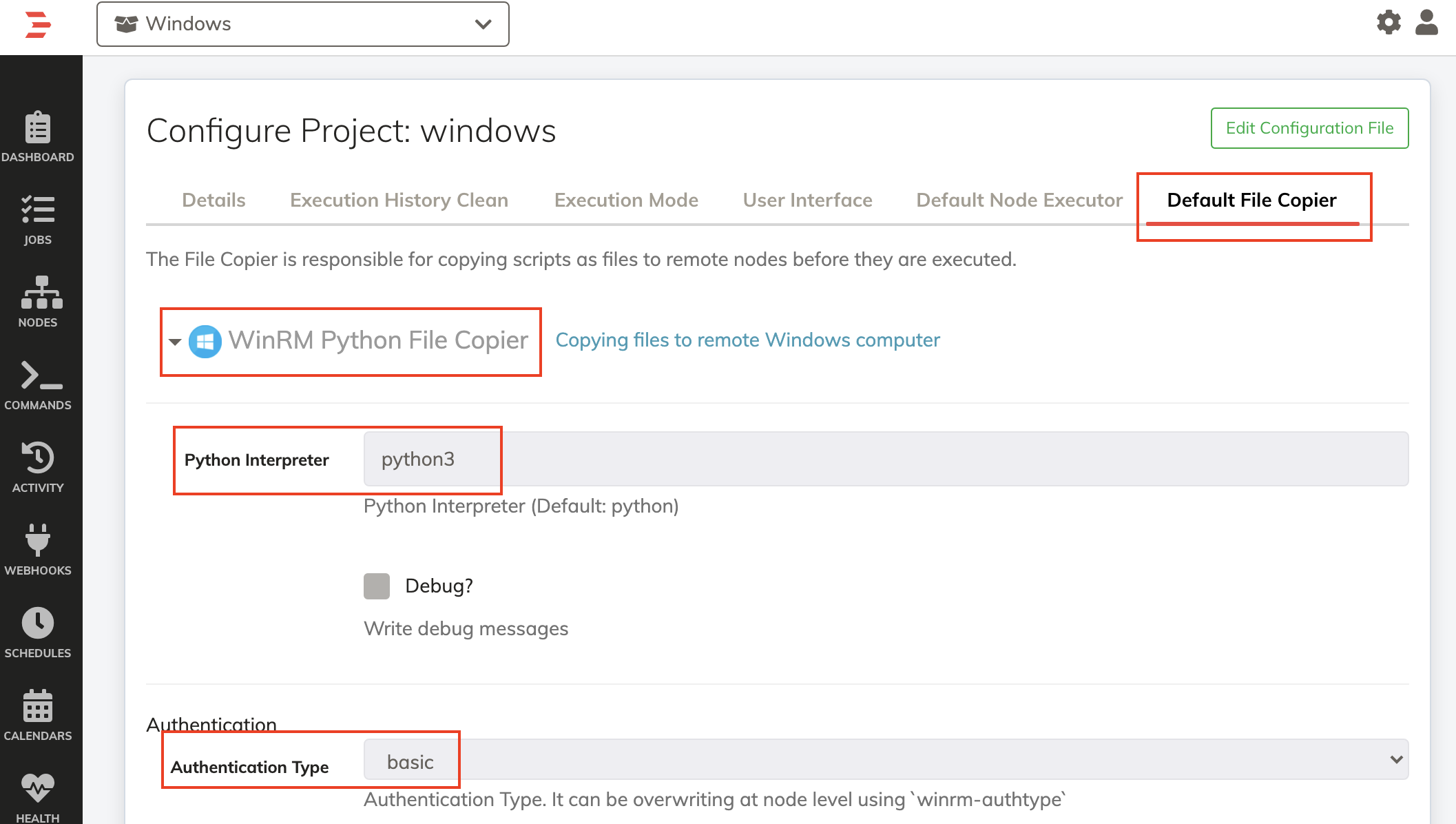
- Click on the Create button.
Additional Configuration
The following properties can optionally be set in the WinRM Node Executor and WinRM File Copier:
No SSL Verification: When this is set totrue, SSL is not validated in the WinRM communication. This can be overridden on nodes withwinrm-nossl.Disable TLS 1.2: Check this box to execute over TLS 1.0
WinRM Transport Protocol: Optionally choose HTTP or HTTPS for the WinRM transport protocol. This can be overridden on nodes withwinrm-transport.WinRM Port: The WinRM port to use. The default is port 5985. This can be overridden on nodes withwinrm-port.WinRM Username: Optional username. The username can be set at node level (using the attributeusername) or at job level (using an input option calledusername).Certificate Path: The path for SSL verification. This can be overridden on nodes withwinrm-certpath.Connect/Read Times Out: The maximum seconds to wait before an HTTP connect/read times out (default 30). This value should be slightly higher than operation timeout, as the server can block at least that long. This can be overridden on nodes withwinrm-readtimeout.Proxy: Optionally specify a proxy address for communicating with Windows nodes. Example HTTP proxy strings arehttp://server:portandhttp://user:pass@server:port. An example SOCKS5 proxy string issocks5://user:pass@server:port.Operation Timeout: The maximum allowed time in seconds for any single wsman HTTP operation (default 20). Note that operation timeouts while receiving output will be silently retried indefinitely. This can be overridden on nodes withwinrm-operationtimeout.Shell: The Windows shell interpreter. Options includecmdandpowershell. This can be overridden on nodeswinrm-shell.Script Exit Behavior: Script Exit Behaviour. Options include:console(default): if the std-error console has data, the process fails.exitcode: script won't fail by default, the user must control the exit code, such as by using a try/catch block. See this link for more details.
Retry connection: Retry the connection to the node if the connection fails. This can be overridden on nodes withwinrm-retry-connection.Retry Connection Delay: Delay in seconds between each retry attempt. This can be overridden on nodes withwinrm-retry-connection-delay.krb5 Config File: Path to akrb5.conffile, either on the Runbook Automation server or Enterprise Runner's host.Kerberos Delegations: If True, TGT is sent to target server to allow multiple hops.
Clean Escaping: Cleans unnecessarily Escaped characters on commands.
Adding a Windows Test Node
Now Rundeck should ask about the model source. Let's start with the Windows node definition.
- Click on the Add a new Node Source + button.
- Select Node Wizard.

- Click Save on the Node Wizard Source.
- Click Save on the Sources tab.
- Switch to the Edit tab.
- Click the Modify button under the Node Wizard entry.
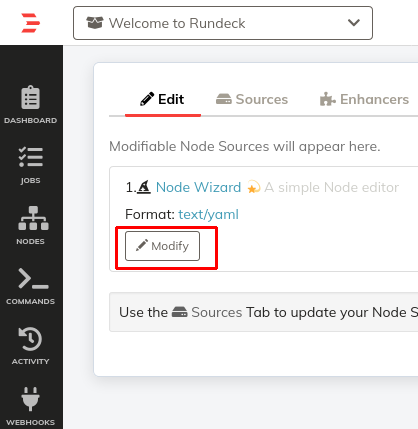
- Set the Node Name to
mywindows - Set HostName to the IP address of your Windows Host.
- Set OS Family to
Windows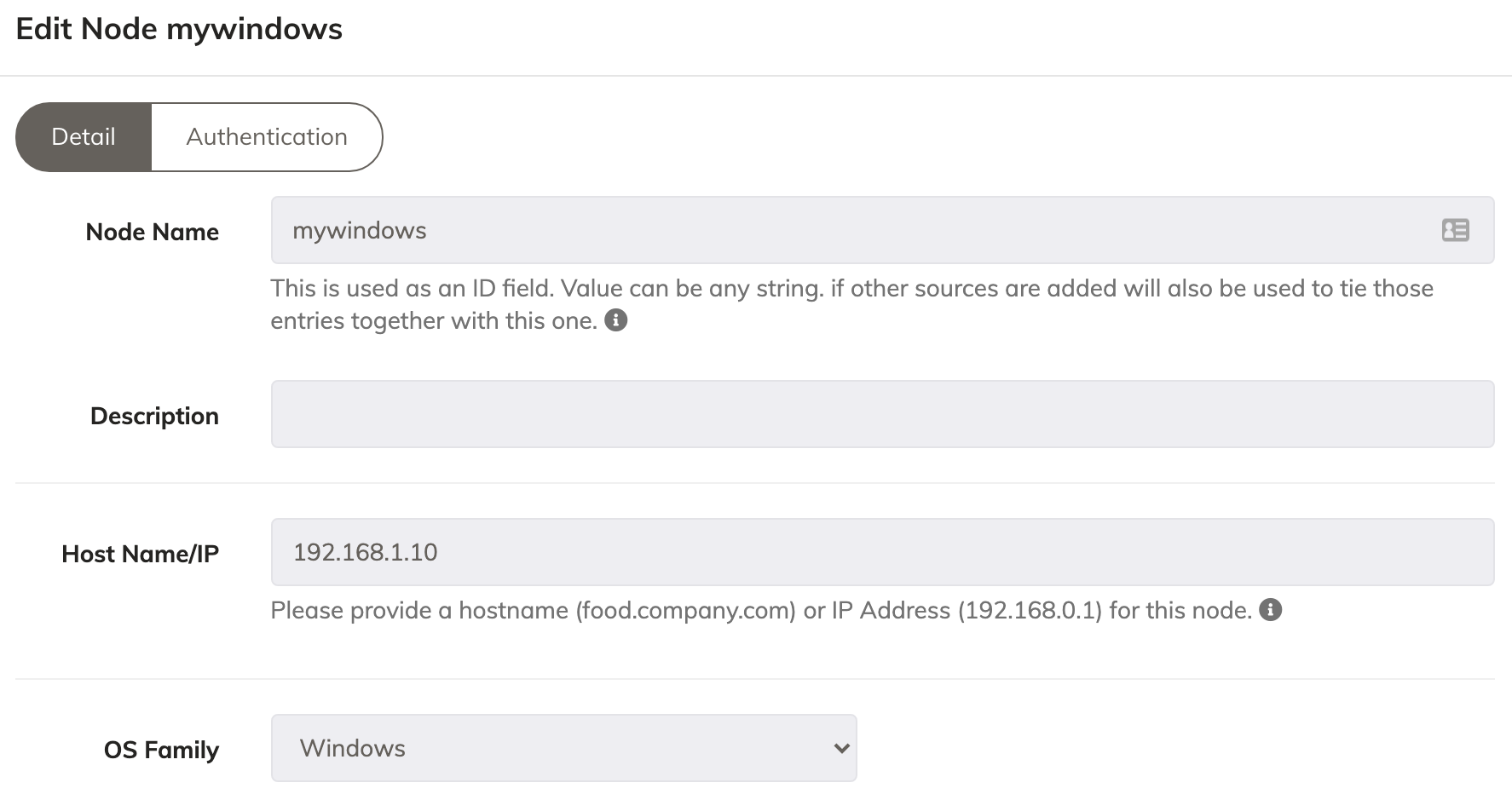
- Click the Authentication Tab at the top.
- Enter your user name for the UserName. (e.g. Administrator)
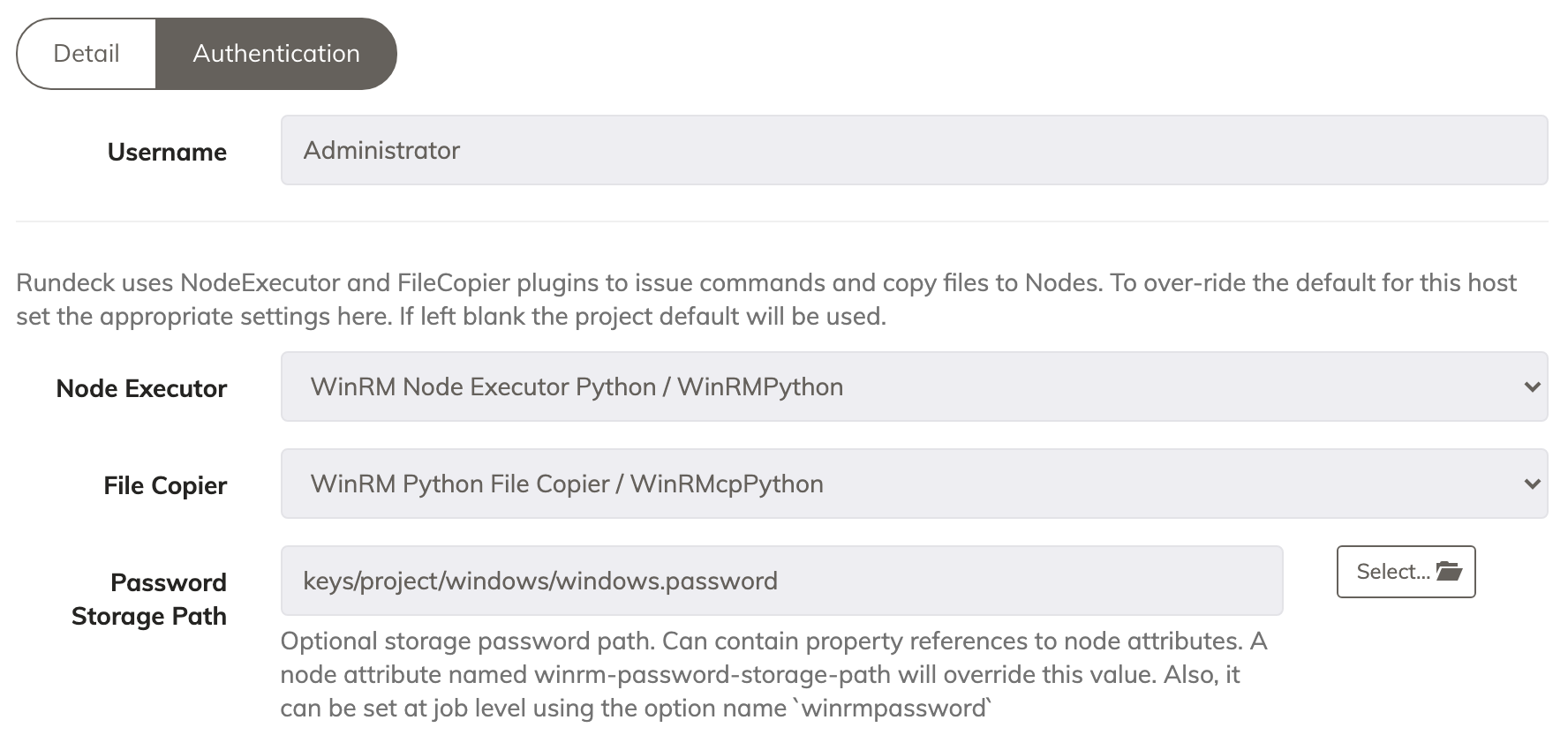
- Set the Password Storage Path to
keys/project/windows/windows.password - Click Add Node to save that node entry.
- Click the Save button under the list of nodes.
- Click on the Add a new Node Source + button.
- Select File

- In the Format section, click on the right list and select the resourceyaml option.
- Put the file's desired path including the file name and extension. (e.g.
~/windows-nodes.yaml) - Select check boxes for Generate, Include Server Node and Writeable checkboxes, and then click on the Save buttons (there are two).
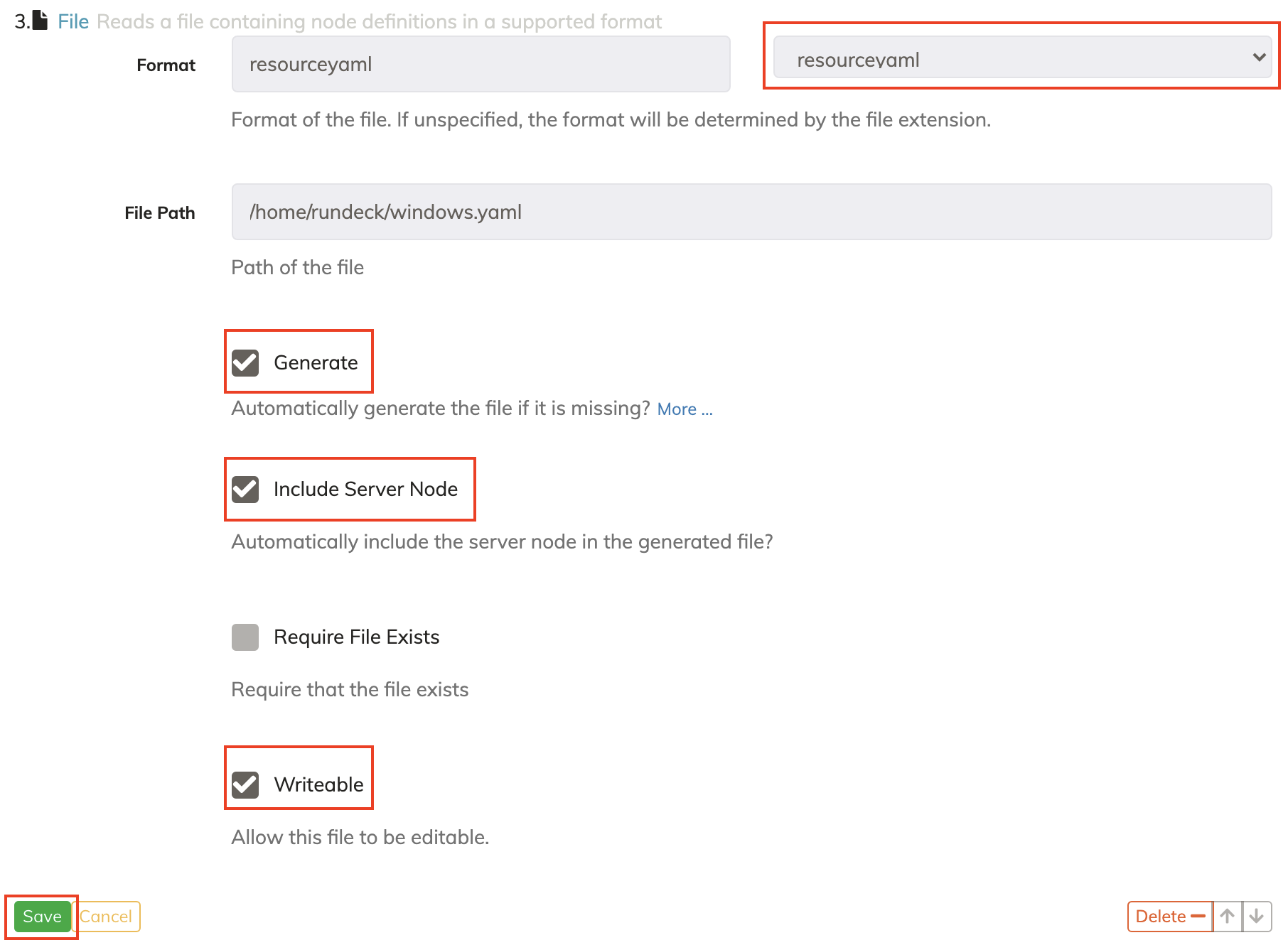
- Now click on the Edit tab, and click on the Modify button.

- Add the following node definition in the node definition text area. Make sure you use your own nodes IP Address for hostname and login name for username
mywindows: description: Windows Server. tags: windows hostname: 192.168.1.10 osArch: amd64 osFamily: windows username: Administrator winrm-password-storage-path: "keys/windows.password" - **Save the entry.
The node is available now by clicking on the "Nodes" section in the left sidebar and setting the filter to.*
Don't forget to add the Windows user password to the Rundeck key storage.
- Go to the System Menu(Gear Icon) > Key Storage.

- Click on the + Add or Upload a Key button.
- Enter the Windows password as shown in the image and save.
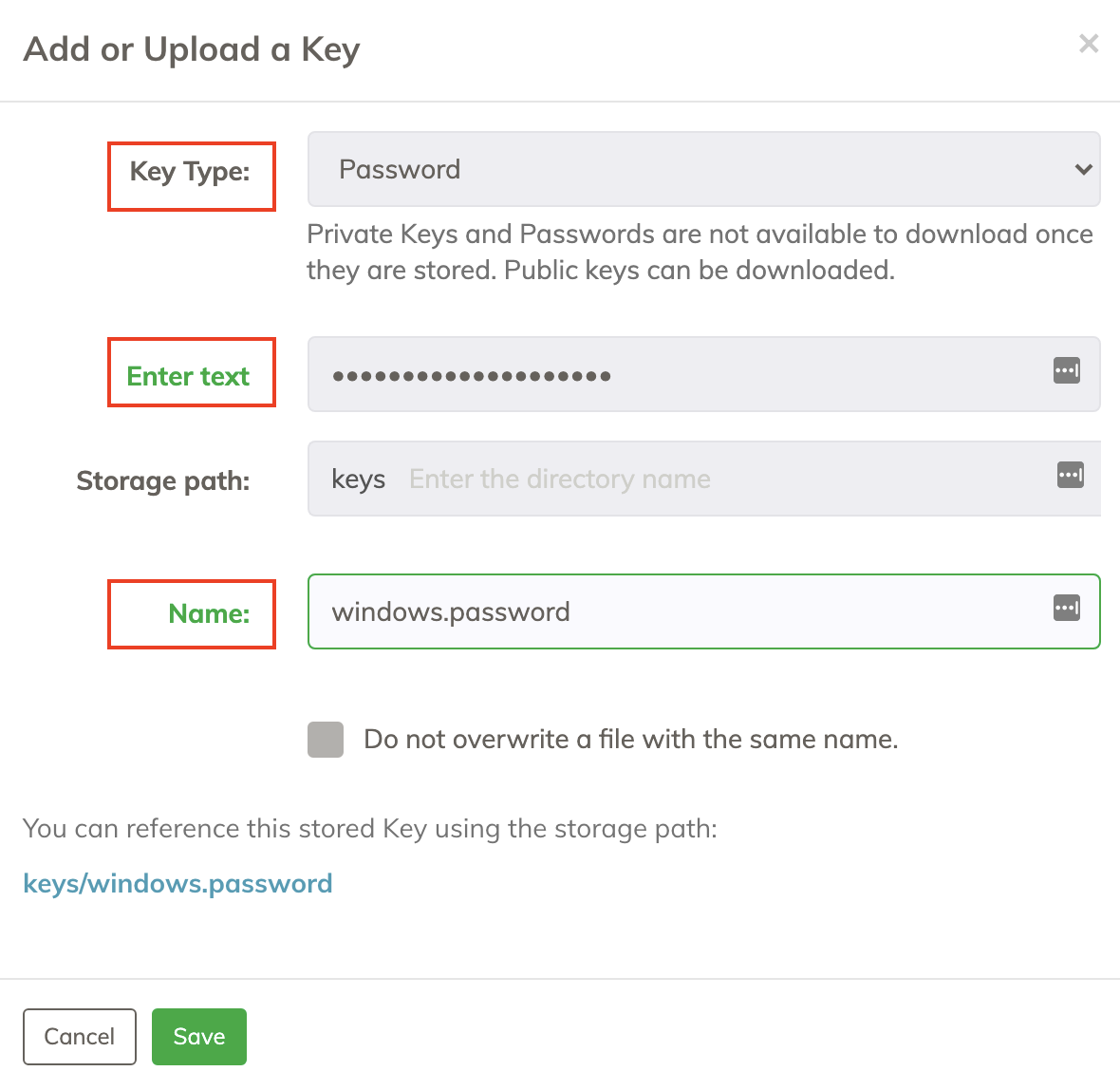
Enterprise Users may need to add
project/windowsto the Storage Path line.
Testing the New Windows Remote Node
Now it's time to send some commands against the windows remote machine.
- Click on the Commands section on the left sidebar.
- On the Nodes section use a filter to dispatch only to the Windows machine, type:
name: mywindows - On the Enter a command textbox type:
dir(listing directories and files). - Click on the Run on 1 Node button.
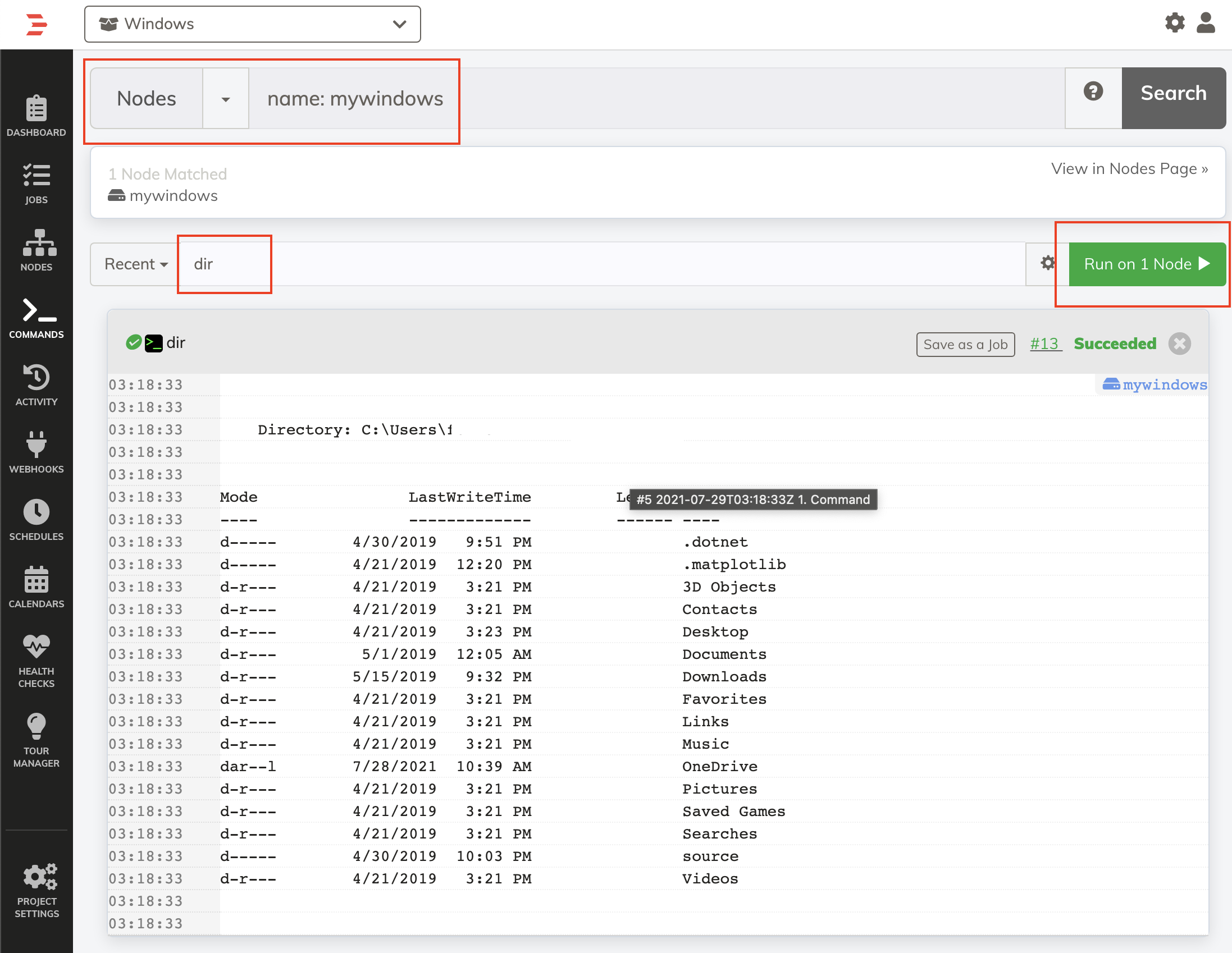
And now your Windows node is ready to receive PowerShell commands from the Rundeck instance.
Additional Information
Using Linux? Read the Using SSH on Linux/Unix Nodes article to learn more.
Networking Issues
Docker Desktop has some limitations to how it handles networking. Check out this information about how to get the Rundeck Welcome Projects to connect to a single host on your local network.
